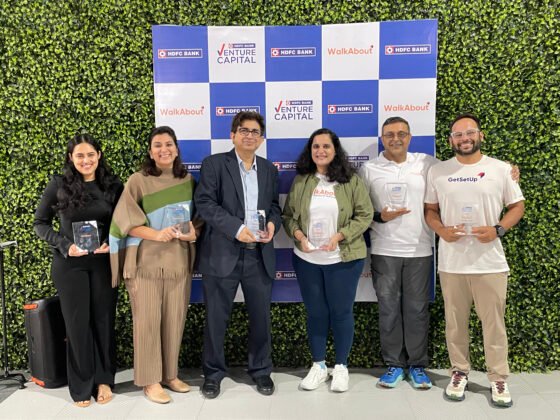
For decades, India’s intellectual and media landscape leaned left. Now, a new force rises — not just in Parliament, but in public discourse, pop culture, and social media.
The Pre-Modi Status Quo: Left-Liberal Monotony in Public Discourse
For much of independent India’s history, public discourse — from university syllabi to newsrooms, films, and think tanks — was overwhelmingly dominated by the Nehruvian socialist and Congress-style secular worldview. This ideological monopoly wasn’t merely political. It pervaded:
Mainstream media with editorial boards leaning center-left Film industry showcasing anti-establishment narratives, rarely pro-tradition or pro-nationalism
Academia with Marxist historians and leftist thinkers shaping textbooks and research
NGO and civil society spaces championing social justice over cultural rootedness
This hegemony allowed liberal and left-wing voices to define what was considered “mainstream,” while voices of Hindu nationalism, economic right, or cultural revivalism were pushed to the margins, often dismissed as regressive or communal.
Modi’s Rise: Not Just a Leader, But an Ecosystem Disruptor
Narendra Modi’s 2014 victory did not just mark the ascent of a political leader; it catalyzed the rise of an entire ideological counterculture. For the first time, the Indian right — long fragmented and ridiculed — found both voice and validation.
The rightist surge wasn’t just about Bhakts on Twitter. It took root in a layered and deliberate way:
Media proliferation: Channels like Republic TV, digital outlets like OpIndia, Swarajya, and Kreately brought unapologetic right-wing narratives to the masses.
Cultural revivalism: Emphasis on Sanskrit, Kumbh Mela, yoga, temple restoration, and Vedic sciences got state patronage and pop attention.
Intellectual response: Books by authors like Sanjeev Sanyal, Vikram Sampath, and R Jagannathan offered historical counterpoints to Left narratives.
Social media armies: From meme wars to fact-checking left biases, right-wing netizens flooded platforms like X, Instagram, and YouTube.
A Democratic Necessity: Why Balance is Healthy
Critics argue that this rightward shift erodes secularism or fuels hyper-nationalism. But from a democratic lens, it corrects a historical imbalance. A true democracy isn’t one where only one ideological current dominates for 60 years. It’s where multiple worldviews clash, debate, and evolve.
Here’s why the rise of the right is essential for India’s democratic health:
✅ Diversifies opinion: Creates intellectual competition and forces the left to evolve.
✅ Challenges elitism: Brings small-town, rooted voices into public discourse.
✅ Revives culture: Reclaims pride in India’s traditions, rituals, and civilizational ethos.
✅ Encourages scrutiny: Right-leaning media is more skeptical of Western paradigms, NGOs, and Islamic appeasement.
✅ Checks narrative control: Breaks monopoly of old elites in TV, cinema, publishing, and policy-making.
Pop Culture to Politics: Rightward Shift is Now Mainstream
From The Kashmir Files to the massive success of Ram Mandir coverage, the Indian Right has begun shaping pop culture too — something that the Left long considered its natural turf.
Bollywood heroes now proudly chant “Jai Shri Ram” on-screen.
Web series dare to explore civilizational themes (e.g., Rocket Boys touches on Nehru’s critics).
Stand-up comics and influencers like @thetanmayb or @abhijitkadian bring satire from a desi-right lens.
Even startup culture and economic nationalism echo right-wing ideologies — celebrating Aatmanirbharta, local brands, and Indian-origin wisdom.
But Beware: Echo Chambers and Extremes
While the rightist ecosystem has balanced decades of one-sided narrative, it too must guard against its own pitfalls:
Blind hero worship: Unquestioning devotion to Modi can dull democratic critique.
Misinformation: Rightist digital pages sometimes indulge in factually incorrect jingoism.Vilification of dissent: Equating every critic with being anti-national erodes civil debate.
To truly be a democratic balance, the right must allow internal debates, tolerate intellectual disagreement, and invest in reason — not just reaction.
The Road Ahead: From Counter-Narrative to Thought Leadership
India’s right has come of age. It is no longer merely reactive, emotional, or populist. It now produces scholarship, influences global geopolitics (think Hindutva in foreign policy debates), and shapes India’s digital identity.
The next step is institutionalization:
Building right-leaning think tanks Supporting academic research in Indian philosophy, economics, and history
Training young journalists, artists, and techies with dharmic values
Promoting policy grounded in cultural context, not Western templates
Final Thought: Democracy is Strongest When All Sides Speak
The Left walked alone for too long in India. The Right is now catching up — sometimes loud, sometimes clumsy, but undeniably vital. For a nation of 1.4 billion with centuries of layered civilizational wisdom, no single ideology deserves monopoly.
Democracy isn’t just about votes every 5 years. It’s about the clash of worldviews every day — on news debates, in classrooms, at family dinners, and inside WhatsApp groups. And in that arena, the Indian Right — powered by the Modi era — has finally found its voice.
FOR MORE BLOGS –beyondthepunchlines.com

 Add to favorites
Add to favorites






